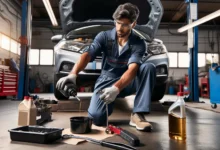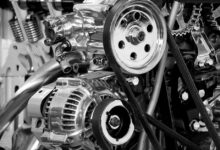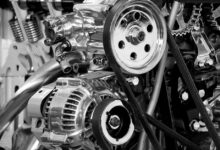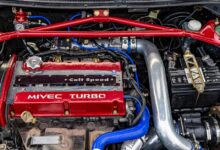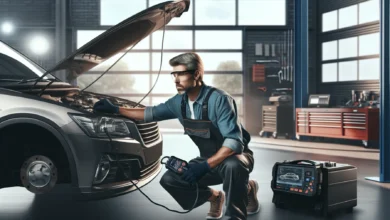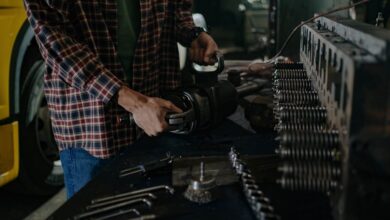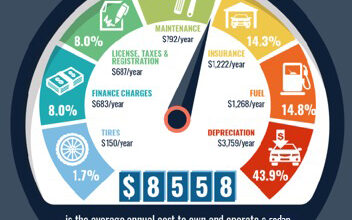Engine Tune-Up Guide: Steps, Benefits, and DIY Tips for Better Performance and Reliability
Sponsored Ads
When my car starts feeling sluggish or the fuel gauge drops faster than usual, I know it’s time for an engine tune-up. Regular tune-ups keep my engine running smoothly and help prevent unexpected breakdowns that can ruin my day. It’s a simple way to ensure my vehicle remains reliable and efficient.
I’ve learned that a well-tuned engine not only saves me money at the pump but also extends the life of my car. Whether I’m a weekend road tripper or just commuting to work, I want my ride to perform at its best. That’s why understanding the basics of an engine tune-up is so important.
What Is an Engine Tune-Up?
An engine tune-up involves performing targeted maintenance on various engine components to enhance performance and extend longevity. I focus on specific steps to address worn or malfunctioning parts that affect engine efficiency.
- Replacing Spark Plugs: I change old spark plugs to improve combustion and reduce misfires. For example, platinum or iridium plugs increase firing reliability.
- Inspecting Ignition Wires: I inspect ignition wires for cracks or corrosion and replace them if they are found to be faulty. High-resistance wires can weaken the spark and cause starting difficulties.
- Changing the Air Filter: I install a new air filter if it is clogged to support optimum air intake and fuel mixture. Performance air filters maintain airflow in dusty conditions.
- Replacing Fuel Filter: I use a new fuel filter to prevent contaminants from entering the fuel injectors. Clean filters help maintain power at high speeds.
- Adjusting Timing: I check the engine timing to avoid knocking or power loss, especially on older vehicles with distributor-based systems.
I ensure these steps restore power, improve fuel economy, and reduce emissions if routine inspections identify deteriorating parts. Regular engine tune-up procedures sustain vehicle reliability for daily commuting.
Materials and Tools Needed for an Engine Tune-Up
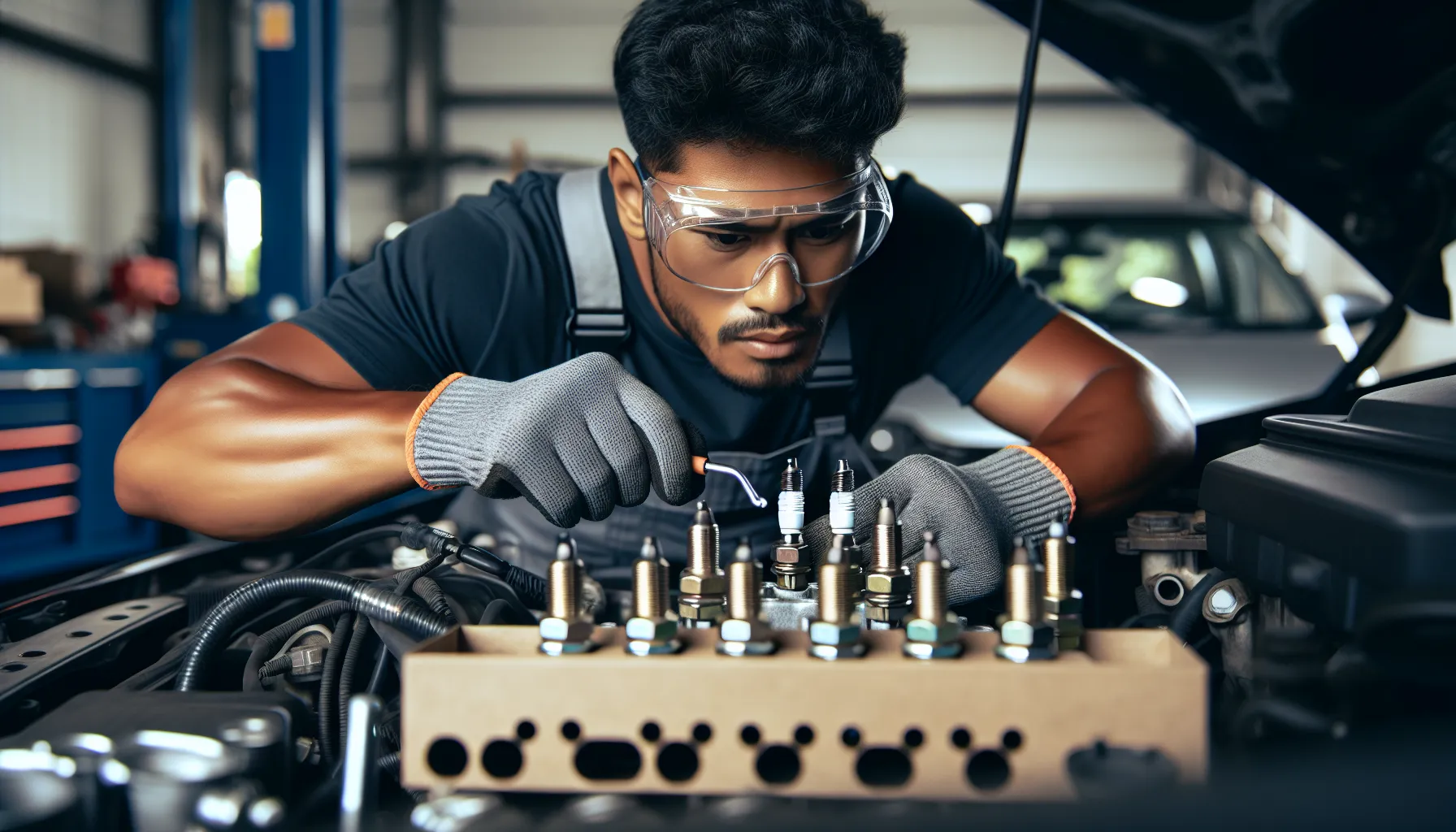
I gather specific materials and tools before I start an engine tune-up. Proper preparation supports fast and accurate maintenance.
Essential Tools
- Socket set with spark plug socket: I use a socket set with a dedicated spark plug socket for removing and installing spark plugs.
- Gap gauge: I use a gap gauge to check the spark plug gap, ensuring accurate ignition.
- Ratchet and extension bar: I use a ratchet and an extension bar to reach recessed spark plugs.
- Screwdrivers (flathead and Phillips): I use both flathead and Phillips screwdrivers for clamps and air filter housing screws.
- Pliers and ignition wire puller: I grip ignition wires and connectors with pliers and use an ignition wire puller for safe removal.
Replacement Parts and Products
- Spark plugs: I select spark plugs that match manufacturer recommendations for optimal efficiency.
- Air filter: I choose a high-quality air filter that is specifically designed for my engine’s make and model.
- Fuel filter: I pick a compatible fuel filter to maintain clean fuel delivery.
- Ignition wires: I inspect and replace ignition wires with durable, original equipment (OE)- spec wires if cracks or corrosion are present.
- Engine oil and oil filter: I change the oil and oil filter during a comprehensive tune-up to achieve improved lubrication and cleanliness.
Safety Equipment
- Safety gloves: I protect my hands from sharp objects and chemicals by wearing safety gloves.
- Safety goggles: I shield my eyes from debris and fluids with safety goggles.
- Disposable shop towels: I use shop towels to wipe up spills and keep the work area clean.
- Fire extinguisher (automotive-rated): I keep a rated fire extinguisher nearby for emergencies, especially around flammable fluids.
Preparing for the Tune-Up
Engine tune-up preparation increases efficiency and safety during the process. I follow clear safety steps, have access to reliable information, and maintain a properly organized workspace.
Safety Precautions
Personal safety should be your top priority when starting an engine tune-up. I only begin after the engine has thoroughly cooled to avoid burns. I disconnect the negative battery cable before touching any parts to minimize the risk of electrical shock. I wear gloves and safety goggles, and I keep a fire extinguisher nearby in case of fuel or electrical hazards.
Locating Your Vehicle’s Service Manual
I always reference the manufacturer’s service manual for tune-up specifications and part locations. I find manuals in my vehicle’s glove box, on the manufacturer’s website, or trusted automotive repair sites like Haynes or Chilton. These sources provide torque settings, component diagrams, and replacement part intervals.
Creating a Workspace
I clear a flat, well-ventilated area such as a garage or driveway for the tune-up process. I organize tools, replacement parts, and safety gear within arm’s reach before starting. I position my vehicle on level ground and use wheel chocks to prevent it from rolling. I then place all removed parts in labeled containers for easy reassembly.
Step-by-Step Guide to an Engine Tune-Up
I follow each step in sequence to maintain component integrity and maximize efficiency during every engine tune-up. Using organized methods and precise actions ensures reliable results.
Changing the Spark Plugs
I remove the old spark plugs carefully by first detaching the ignition wires using an ignition wire puller. Using my socket set with the correct spark plug socket, I loosen each spark plug in turn and extract them. I use a gap gauge to check and adjust the new spark plugs to the manufacturer’s specified gap, as outlined in the service manual. I thread each new spark plug by hand to avoid cross-threading, then tighten them with a ratchet and extension bar to reach the correct torque. I reattach the ignition wires, pressing firmly to secure the connections. Immediate replacement of worn spark plugs restores combustion, boosts fuel efficiency, and supports smooth engine operation.
Replacing the Air Filter
Replacing the air filter increases airflow to the engine and improves combustion efficiency. I start by locating the air filter housing, which is usually a black plastic box located near the top or side of the engine bay. I open the housing by releasing metal clips or unscrewing fasteners, depending on the vehicle design.
I lift the old air filter straight out and inspect it for dirt, debris, or discoloration. Excessive dirt or blockage means decreased airflow and reduced engine power. I compare the new air filter to the old one to confirm the correct size and shape before installation.
I insert the new, clean air filter with the pleated side facing the incoming air, ensuring a tight seal along the edges. I then close and secure the air filter housing, ensuring that every latch and screw is reattached to prevent exposure to unfiltered air.
I recommend checking the vehicle’s owner’s manual for replacement intervals. Most manufacturers recommend replacing the air filter every 12,000 to 15,000 miles or once a year, but driving in dusty conditions may require more frequent checks.
Cleaner air filters improve throttle response and may increase fuel efficiency by up to 10 percent, according to the US Department of Energy. If the engine hesitates or the filter looks clogged, replacing the air filter typically resolves the issue.
Inspecting and Replacing the Fuel Filter
Inspecting and replacing the fuel filter ensures that contaminants do not enter the engine and affect performance. I start by referring to my vehicle’s service manual for the location of the fuel filter—typical placements include along the fuel line, under the chassis, or in the engine bay.
Inspection Steps
- Locate the fuel filter assembly on the vehicle by referencing the manual or searching near the fuel tank or engine compartment connections.
- Examine the filter housing for visible signs of rust, leaks, or debris, which may indicate clogging or wear.
- Review maintenance records to check if the filter has surpassed the recommended change interval, which ranges from 20,000 to 40,000 miles for most models, according to manufacturer guidelines.
Replacement Steps
- Relieve system pressure before disconnecting the filter; I do this by removing the fuel pump fuse and starting the engine until it stalls.
- Disconnect the negative battery cable to prevent accidental electrical discharge.
- Use a line wrench or quick-disconnect tool to detach the old filter, securing lines with a rag to catch fuel spills.
- Install the new filter, aligning the flow arrow with the fuel direction marked on the assembly, and fasten the connections tightly with the original hardware.
- Double-check fittings for leaks, then reconnect the battery and fuel pump fuse before starting the engine.
- Monitor the first engine start for irregular idling or warning lights.
Fuel Filter Inspection and Replacement Table
| Task | Optimal Frequency | Primary Tools | Key Steps |
|---|---|---|---|
| Inspect the fuel filter | Every 12,000 miles or annually | Flashlight, manual | Check for rust, leaks, debris, and consult records |
| Replace the fuel filter | Every 20,000-40,000 miles | Line wrench, rag | Relieve pressure, disconnect lines, install a new filter, and test for leaks. |
Engine tune-ups rely on a clean fuel filter to maintain consistent fuel flow and support optimal combustion. Efficient filtration prevents deposits from fouling injectors, which sustains power and reduces long-term maintenance costs.
Checking and Replacing Ignition Wires
Checking and replacing ignition wires helps prevent misfires and maintain strong engine performance. I first inspect each ignition wire for cracks, corrosion, or worn insulation. I gently pull on the boots at both ends to detect any looseness. I check for brittle or damaged areas, focusing particularly on the distributor cap and spark plug ends, as these spots are often prone to deterioration from heat exposure.
Removing the ignition wires requires care to avoid damaging terminals. I grasp the boot, not the wire, then rotate and pull gently to detach each one. I inspect metal contacts for rust or discoloration, which can hinder current flow and cause ignition problems. I look for burnt spots or signs of arcing along the wire’s length to identify internal faults.
Installing new wires involves matching lengths to the original routing. I use replacement ignition wires that match my vehicle’s engine specifications, referencing the service manual or manufacturer’s database for the proper part numbers. I replace wires one at a time to preserve the firing order, thereby avoiding incorrect connections that can result in poor performance or starting issues.
Attaching new wires requires securing boots onto spark plugs and distributor or coil terminals until I hear a distinct click, confirming a tight seal. I route wires away from hot engine parts, using built-in clips or holders, to prevent premature failure. I verify connections by starting the engine and listening for smooth idling; irregular sputtering may indicate a loose wire.
Routine replacement of ignition wires typically occurs every 30,000 to 50,000 miles for conventional wires and up to 100,000 miles for modern silicone-core versions, as stated by sources such as the Society of Automotive Engineers. I always consult the service manual for vehicle-specific recommendations. Tracing ignition wires and replacing them at signs of wear supports consistent combustion and sustains high engine efficiency throughout the engine tune-up process.
Inspecting the Distributor Cap and Rotor (If Applicable)
Inspecting the distributor cap and rotor provides crucial insight into the health of the ignition system for engines using conventional ignition designs. Connecting the coil to each spark plug, these components play a direct role in firing order and timing.
- Checking exterior condition
Examining the exterior of the distributor cap reveals signs of cracks, burn marks, or carbon tracking. Replacing a cap becomes essential if hairline fractures or black, arc-shaped lines appear, as these can lead to misfires and uneven engine operation.
- Removing the distributor cap
Unfastening retaining clips or screws secures easy cap removal. Marking the cap position before lifting preserves correct alignment. Lifting the cap exposes the rotor and the inner terminals for assessment.
- Inspecting the rotor
Reviewing the rotor tip and body detects pitting, corrosion, or thermal damage. Noting any green or bluish tinge at the tip often indicates frequent high-voltage arcing. Replacing the rotor ensures reliable spark delivery when wear or excessive discoloration is present.
- Cleaning contact points
Cleaning light oxidation from the inner terminals with a lint-free cloth or fine emery paper improves electrical conductivity. Avoiding abrasive products prevents loss of designed tolerances. Keeping terminals shiny and debris-free boosts ignition performance.
- Assessing carbon buildup
Spotting gray or black residue on the cap terminals requires gentle cleaning, as excessive carbon can hinder spark transfer and increase the risk of misfire. Using a contact cleaner effectively removes most buildup.
- Ensuring moisture control
Checking inside the cap for water droplets, greenish corrosion, or white powdery residue prevents sudden ignition failures. Drying the components with a clean cloth eliminates moisture that may cause hard starts, especially after rain or car washes.
- Reinstalling components
Reinstalling the cap and rotor securely, aligning them according to initial markings, finalizes the inspection process. Confirming clips or screws are tight ensures a sealed fit that blocks debris and humidity.
Properly inspecting the distributor cap and rotor during an engine tune-up ensures strong spark delivery, supporting consistent engine startup and performance. Dependable ignition components further reduce wear on spark plugs and ignition wires, protecting the entire system.
Replacing the PCV Valve
Replacing the PCV valve supports a stable idle and optimal fuel economy during an engine tune-up. I locate the PCV valve by following the hose from the intake manifold or valve cover to a small, cylindrical component. I grasp and detach the hose connection, then twist and lift the valve from its grommet or retaining clip.
I inspect the old PCV valve for oil buildup, clogs, or rattling when shaken. If the valve fails this inspection, I will discard it. I insert a new valve, pressing it firmly into place until secure. I reconnect the hose, ensuring a tight seal to prevent vacuum leaks.
I verify fit and function by starting the engine and listening for changes in idle. Smooth and steady idle confirms correct PCV installation. I reference the service manual for recommended replacement intervals, which typically range from 20,000 to 50,000 miles, depending on vehicle make and model. A properly installed PCV valve reduces sludge, decreases emissions, and helps maintain long-term engine reliability.
Inspecting Belts and Hoses
Inspecting belts and hoses during an engine tune-up helps identify issues that may lead to breakdowns or reduced engine efficiency.
Belts
- Examining drive belts means looking for cracks, fraying, glazing, or missing sections, especially on serpentine belts or V-belts.
- Pressing the belt in the middle between the pulleys checks for the correct tension; more than half an inch of deflection indicates that adjustment or replacement may be necessary.
- Listening for squealing when the engine starts often signals worn or loose belts that need immediate attention.
- Noting the age of belts—replacing them every 50,000 to 100,000 miles or as specified in the owner’s manual—prevents sudden failures.
Hoses
- Inspecting coolant, vacuum, and heater hoses uncovers leaks, swelling, softness, hardening, cracks, or bulges near clamps or at bends.
- Squeezing hoses gently reveals internal damage or excessive softness, which means deterioration has occurred.
- Feeling sticky or oily surfaces indicates contamination or nearby leaks that could accelerate hose failure.
- Checking clamps and connections ensures a tight fit and absence of leaks, which is critical when visible residue or corrosion appears.
Belts and hoses have a direct impact on engine temperature control, accessory operation, and the stability of the vacuum system. Detecting early wear by visually and physically checking these parts allows for prompt replacement, maximizing the reliability of the overall engine tune-up.
Checking and Filling Engine Fluids
Accurate engine fluid levels enable smooth operation and protect internal engine parts. I check and fill each essential fluid to avoid costly malfunctions and support a complete tune-up routine.
Oil
Checking oil levels and topping off ensures optimal lubrication of engine parts. I park my car on a level surface and let the engine cool completely before pulling the dipstick, wiping it clean, and reinserting it fully. I check the oil level against the minimum and maximum marks, adding manufacturer-recommended oil if the level falls below the minimum. I inspect the oil color and consistency, and I replace the oil that appears dark or gritty.
Coolant
Inspecting coolant helps prevent overheating and engine damage. I verify the coolant reservoir’s level markings, only opening the cap when the engine is cold to avoid scalding. I add a 50:50 mix of coolant and distilled water when the level falls below the “low” mark. I look for cloudy or rusty coolant as indicators of contamination and flush the system as needed.
Transmission Fluid
Transmission fluid supports smooth gear changes and transmission longevity. I start the engine, shift through all gears with the brake pressed, and then check the dipstick while the engine runs and the transmission is in Park. I use a lint-free cloth to inspect the fluid, noting if the color remains bright red and the consistency is free of debris. I refill with the specified fluid type when the level is below the recommended range, addressing milky or burned-smelling fluid with a complete change.
Brake Fluid
Monitoring brake fluid directly impacts braking power and safety. I locate the brake master cylinder reservoir, usually mounted near the firewall, to check the fluid against the “min” and “max” markings. I top off with only the recommended DOT grade brake fluid, taking care to avoid dirt contamination or overfilling. I seek an inspection or system flush if the brake fluid appears dark or contains sediment.
Additional Tips for a Successful Engine Tune-Up
Enhancing my engine tune-up routine with targeted actions increases long-term reliability and efficiency. Monitoring post-tune-up results and documenting changes creates a measurable pathway for future maintenance.
Resetting the Check Engine Light
Resetting the check engine light finalizes my engine tune-up and confirms that the maintenance steps were practical. Disconnecting the negative battery cable for sixty seconds erases stored diagnostic codes on most vehicles. Using a dedicated OBD-II scanner provides the most accurate reset for models with advanced monitoring systems. If the light persists after the reset, unresolved issues may remain. Therefore, I scan for error codes and address any faults before continuing regular vehicle use.
Keeping a Maintenance Log
Keeping a maintenance log organizes every step completed during my engine tune-up and establishes a comprehensive service record. Recording parts replaced, fluid levels checked, component inspections, and service dates create a detailed reference for routine reviews. I include odometer readings, observed issues, and outcomes after the tune-up for complete accuracy. Reliable logs simplify warranty claims and enable easier diagnostics for future repairs.
Troubleshooting and Common Issues
Tune-up results sometimes reveal persistent engine problems or introduce new issues. I rely on targeted steps to isolate and solve these common engine tune-up challenges.
Engine Still Runs Rough
The engine runs rough after a tune-up when key components experience faults.
I check spark plug connections for loose fittings and re-seat them firmly if instability appears. I inspect for misrouted or mismatched ignition wires, ensuring the firing order matches the diagrams from the service manual, which can be found online or in the glove box. I test the air filter housing for leaks or loose covers, confirming a correct seal to avoid unmetered air. I also scan for vacuum hose disconnections near the intake manifold and reconnect any I find detached.
Difficulty Starting After Tune-Up
Difficulty starting after an engine tune-up indicates possible ignition, fuel, or sensor problems.
I review battery connections for firm placement and tightness, especially on the negative terminal that I previously disconnected. I recheck spark plug gaps with a gauge, confirming they match the manufacturer’s specifications listed in the vehicle owner’s manual. I verify fuel filter alignment and look for signs of improper installation, such as fuel leaks or engine hesitation. I scan for disturbed crankshaft or camshaft position sensor wiring and secure any loose connections detected during earlier procedures.
Unusual Noises or Smells
Unusual noises or smells after a tune-up often indicate incorrect assembly or fluid issues.
I listen for ticking or knocking noises that indicate overtightened or cross-threaded spark plugs and correct the torque if needed using a torque wrench. I inspect belts for squeals indicating slip or misalignment, then retension or realign any belt I find off track. I search for burnt or electrical smells that hint at pinched wires or overheated components, and replace wires that show signs of melting. I track fuel or oil odors back to filter or hose installation points and reseat clamps or seals if seepage occurs.
Systematic troubleshooting of engine behavior, starting performance, and new noises maximizes tune-up reliability and extends component life.
When to Consult a Professional Mechanic
Recognizing situations that require professional intervention maintains engine safety and performance. I identify specific warning signs and circumstances where my expertise or tools become insufficient.
- Persistent Engine Problems
Engine misfires, rough idling, or stalling persist after my tune-up steps if underlying electrical or mechanical failures are present. I consider professional assistance for repeated check engine lights, unresolved power loss, or unexplained noises.
- Complex Diagnostic Codes
I encounter unfamiliar or multiple trouble codes on an OBD-II scanner if system-level diagnostics are needed. Flashing check engine lights, permanent codes, or codes related to the catalytic converter indicate advanced issues (source: National Institute for Automotive Service Excellence).
- Electrical System Failures
Difficulties restarting the engine, flickering dashboard lights, or continued battery drain can signal electrical system malfunctions. I seek specialized help for checks on the alternator, starter motor, or wiring harness.
- Unusual Fluid Leaks
I detect persistent oil, coolant, or fuel leaks that my basic inspections do not resolve. Leaks from head gaskets or transmission require professional tools for pressure and dye testing.
- Engine Overheating or Coolant Loss
Steam, high temperature gauge readings, or rapid coolant loss may point to head gasket or radiator issues. Certified mechanics utilize pressure tests and advanced diagnostics that exceed the scope of my typical tune-up.
- Timing and Internal Engine Adjustments
Operations involving timing belt or chain replacement, valve adjustments, or accessing internal engine parts often demand precise torque specs and calibration. Manufacturers recommend specialist skills to prevent costly errors (source: Automotive Service Association).
- Warranty or Recall Repairs
Authorized dealers must service vehicles under factory warranty or be subject to recall campaigns to maintain warranty protection and receive covered repairs.
Recognizing these conditions supports safe engine operation and prevents severe mechanical damage. My willingness to engage a skilled mechanic ensures long-term vehicle reliability during and after routine engine tune-ups.
Conclusion
Taking the time for regular engine tune-ups has made a noticeable difference in how my vehicle runs and how confident I feel behind the wheel. Staying attentive to small maintenance tasks helps me avoid bigger headaches down the road and keeps my car running smoothly.
I’ve learned that every small step adds up to long-term reliability and cost savings. If you ever feel unsure or run into persistent issues, don’t hesitate to reach out to a professional. A well-maintained engine isn’t just about performance—it’s about peace of mind every time you drive.
Frequently Asked Questions
What is an engine tune-up?
An engine tune-up is a regular maintenance procedure that involves inspecting, cleaning, and replacing key engine components, such as spark plugs, filters, and ignition wires, to ensure optimal performance, fuel efficiency, and reliability.
How often should I get an engine tune-up?
Most vehicles benefit from an engine tune-up every 30,000 to 50,000 miles; however, it’s always best to refer to your owner’s manual for specific recommendations based on your car’s make and model.
What are the main benefits of regular engine tune-ups?
Regular engine tune-ups prevent unexpected breakdowns, improve fuel efficiency, reduce emissions, save you money on repairs, and help extend your vehicle’s lifespan.
What are the key steps in a typical engine tune-up?
A typical engine tune-up includes replacing spark plugs, inspecting ignition wires, changing air and fuel filters, checking belts and hoses, inspecting the distributor cap and rotor, replacing the PCV valve, and topping off engine fluids.
What tools and materials are needed for an engine tune-up?
You’ll need a socket set with a spark plug socket, a gap gauge, a ratchet and extension bar, screwdrivers, pliers, an ignition wire puller, spark plugs, an air filter, a fuel filter, ignition wires, gloves, goggles, and shop towels.
How do I know if my engine needs a tune-up?
Look for warning signs such as rough idling, hard starting, decreased fuel efficiency, engine misfires, unusual noises, or a check engine light.
Can I perform an engine tune-up myself?
Yes, if you have basic mechanical skills, the right tools, and follow the steps carefully using your vehicle’s service manual, you can perform a tune-up at home.
Why is it essential to replace the air filter during a tune-up?
Replacing the air filter ensures optimal airflow into the engine, which improves combustion efficiency, throttle response, and can boost fuel economy by up to 10%.
How often should I replace the fuel filter?
Most vehicles recommend replacing the fuel filter every 20,000 to 40,000 miles, but consult your owner’s manual for the exact interval.
What should I do if the engine runs poorly after a tune-up?
Double-check all connections, ensure spark plugs and ignition wires are properly installed, and verify that all filters and components are correctly seated. Consult a mechanic if problems persist.
When should I seek professional help instead of doing my tune-up?
Please seek professional help if you encounter persistent engine misfires or stalling, complex diagnostic codes, electrical issues, major leaks, overheating, or require timing or internal engine adjustments.
How should I prepare my workspace for an engine tune-up?
I’d like you to work in a well-lit, organized space with tools and replacement parts within reach. Have labeled containers available for removed parts to ease reassembly and ensure safety.
What safety precautions are necessary during a tune-up?
Always start with a cool engine. Could you disconnect the negative battery cable, wear gloves and goggles, and keep a fire extinguisher nearby for added safety?
Do you think it’s essential to log engine tune-ups and repairs?
Yes, keeping a detailed log helps track maintenance, diagnose future problems more easily, and support warranty claims or resale value.


